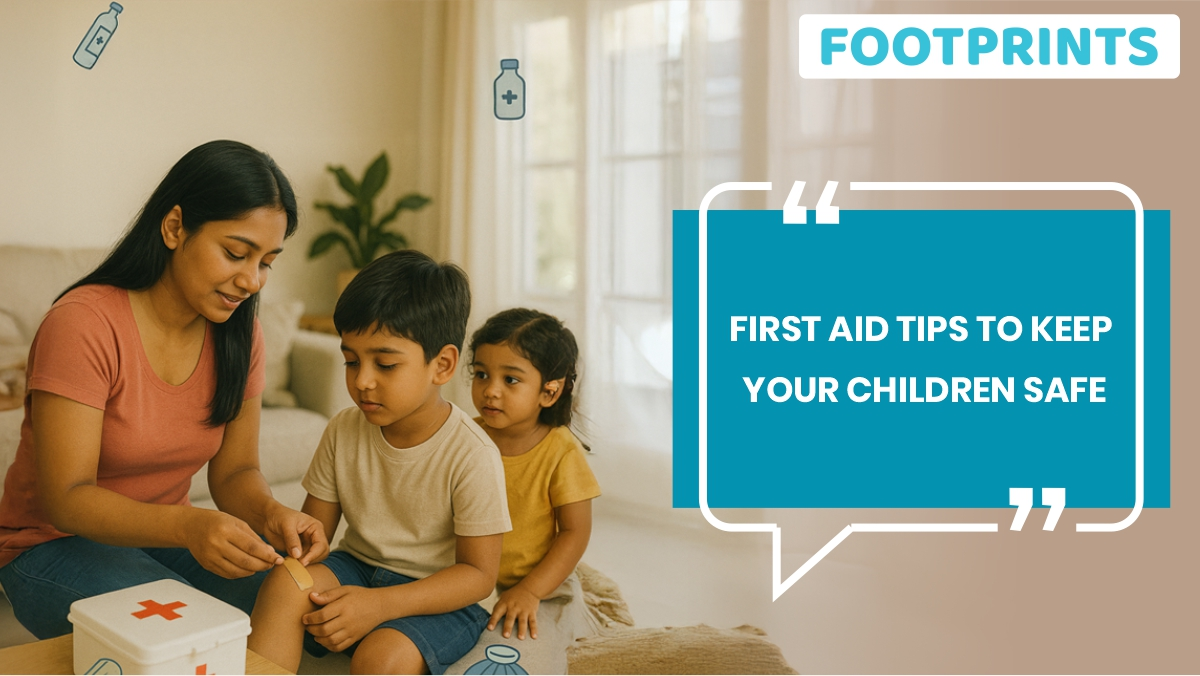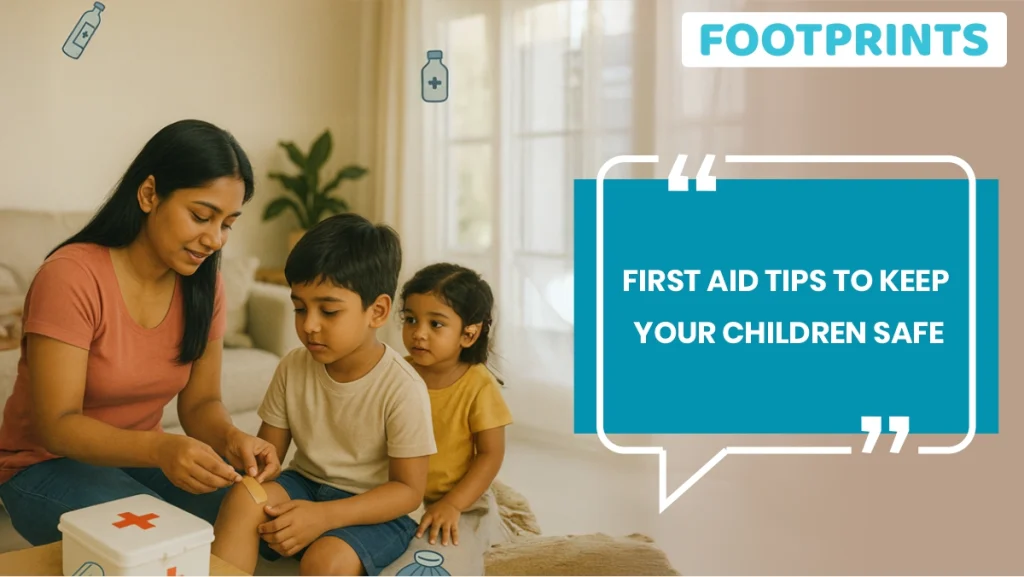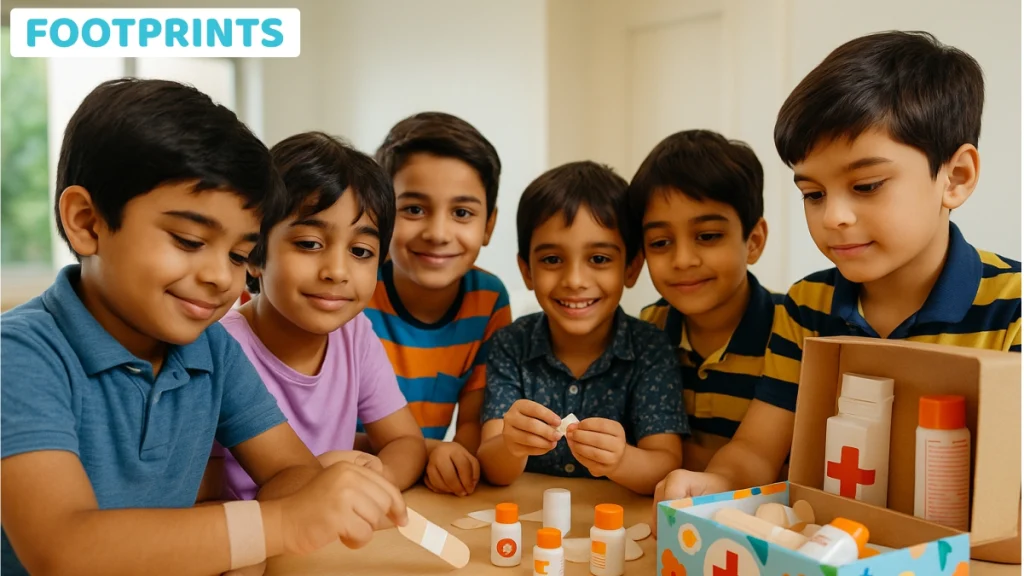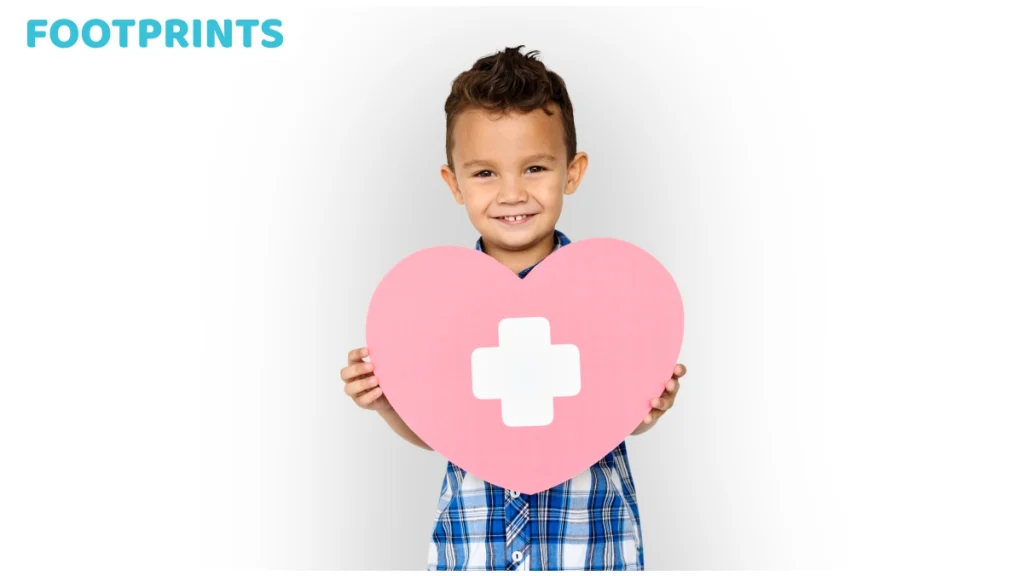

To say that children are naturally curious and energetic is to state the obvious. Living with these energy bunnies means that accidents and illnesses are a part of the growing-up years. While it is important to be cautious, it is even more important to be prepared with basic first aid to be able to offer the right response. Whether it’s a sudden nosebleed, a high fever, or a fall from the sofa, being prepared helps you to act quickly. Here is a handy guide with basic first aid safety tips for parents that can help you deal with common childhood emergencies and support recovery
First Aid for Fever
While we tend to fear fever in children, the fact is that fever is one of the early symptoms that signals that the body is fighting against some infection. While it is important to treat the root cause, here are some ways to manage a fever:
- Periodically check the temperature using a digital thermometer.
- Keep the child hydrated.
- Ensure that you dress them lightly and keep the room cool.
- Use paracetamol if the child is uncomfortable, but make sure you follow dosage guidelines.
If the fever lasts more than 3 days, it is imperative to consult a paediatrician.
Sometimes fever may be accompanied by febrile convulsions in children. In such cases ensure that you lay them on their side so that you prevent choking. During a febrile seizure it is important that you do not restrain the child or put anything in the child’s mouth or try to give the child fever-reducing medicine. Do not also try to put the child under cool water. Keep track of how long the seizure lasts. If the seizure lasts for more than 5 minutes or if you notice significant breathing issues in the child do get medical help immediately.
Home Remedies for Loose Motion in Infants
Loose motions are yet another issue that children deal with often. When dealing with such a situation, remember to:
- Not stop breastfeeding if the child is breastfed.
- Offer ORS as per pediatric instructions
- If you are dealing with an infant, remember to keep the baby as dry as possible. This would mean changing the diaper often so diaper rashes are avoided
- If the child is on solid food, offering solid items like banana and rice is important
- Avoid items like cow’s milk, fruit juices, etc.
- If the child shows other symptoms like vomiting, fever etc, do take medical advice
Home Remedies for Vomiting in Children
Vomiting may occur on account of a number of factors such as infections or food intolerance. In such cases, it is important not to panic. Some of the things to be mindful of, include:
- Keep them hydrated with small sips of water or ORS.
- Mild ginger tea can help older children.
- Avoid solid food until vomiting stops.
- Ensure that the child takes adequate rest.
If the child shows persistent vomiting, dehydration or you notice any blood in vomit, do seek immediate medical attention.

Baby Breathing Problems
It is important to know that breathing issues in babies can escalate quickly. Some of the signs to watch out for if the child seems to have breathing issues, include:
- Rapid breathing or grunting sounds
- Lips or fingertips turning blue
- Chest retractions
If you notice any of these signs, seek emergency care immediately. In the meantime:
- Keep the baby upright
- Loosen tight clothing
- Avoid crowding or overheating
Baby Head Injury
Babies are known to bump their heads often. It is important to remember that not all injuries are serious and therefore not to lose your calm. In minor bumps, you can apply a cold compress to reduce swelling. However, do watch out for signs such as vomiting or drowsiness. It is also important to check that there is no abnormal pupil response.
If the baby has fallen from a height or shows signs of confusion, lethargy, or seizures, seek medical help immediately.
Nose Bleeding First Aid
First up, remember that nose bleeds can often happen from factors such as dry climate or minor trauma. If the child is experiencing a nosebleed, remember to:
- Make the child sit upright and lean them slightly forward.
- Apply a cold compress to the bridge of the nose.
- Avoid blowing the nose for several hours afterwards.
If bleeding is recurrent, consult a doctor.
Building Your Child-Safe First Aid Kit
It is important that every household has a child-friendly first aid kit. Essential elements of such a kit, include:
- Digital thermometer
- Paracetamol
- ORS packets
- Adhesive bandages and antiseptic cream
- Cold compress packs
- Nasal saline spray
- Sterile gauze and tape
- CPR mask
- Emergency contact list
Ensure that the first-aid kit is highly accessible while also keeping it out of reach of small children

To Sum Up
It is important to remember that being aware and prepared is half the battle won. Early response can make all the difference both in comforting the child and in preventing complications. Do remember, however, that first aid is only the first response and isn’t an alternative to medical advice.
For more such informative content, stay tuned to this space. At Footprints Preschool, we are committed to the holistic growth and health of our students
FAQs
1. What temperature is considered a fever in children?
Anything above 100.4°F is considered a fever.
2. Are febrile seizures dangerous?
They are usually harmless, but they should be evaluated by a doctor.
3. How do I know if my baby’s breathing is abnormal?
Look for rapid breathing, grunting, and bluish skin. Do seek emergency care if any of these symptoms appear.
4. Can I use home remedies for vomiting in infants?
Use them only under pediatric guidance, especially when it comes to infants and young children.
5. What’s the best way to treat loose motion in infants?
Breastfeeding, ORS, and bland foods like banana or rice water are safe options.
6. When should I worry about a baby’s head injury?
If there’s vomiting, drowsiness, seizures, or abnormal behavior, seek immediate medical help.
7. What is rescue breathing, and when is it used?
It’s used when a child isn’t breathing but has a pulse. It helps maintain oxygen flow until help arrives.
8. Can I give painkillers for a fever without a doctor’s advice?
Use age-appropriate paracetamol as per dosage guidelines, under medical instructions
9. What should I keep in a child-safe first aid kit?
Thermometer, ORS, antiseptics, bandages, cold packs, medications, and emergency contacts should be a part of first-aid kits
Aditya brings over ten years of expertise as a Senior Marketing Strategist. He’s an expert at developing captivating marketing tactics that regularly provide excellent outcomes. His innovative strategies have demonstrated a track record of increasing organizational reach and engagement, showcasing his extensive knowledge of the contemporary marketing landscape.

